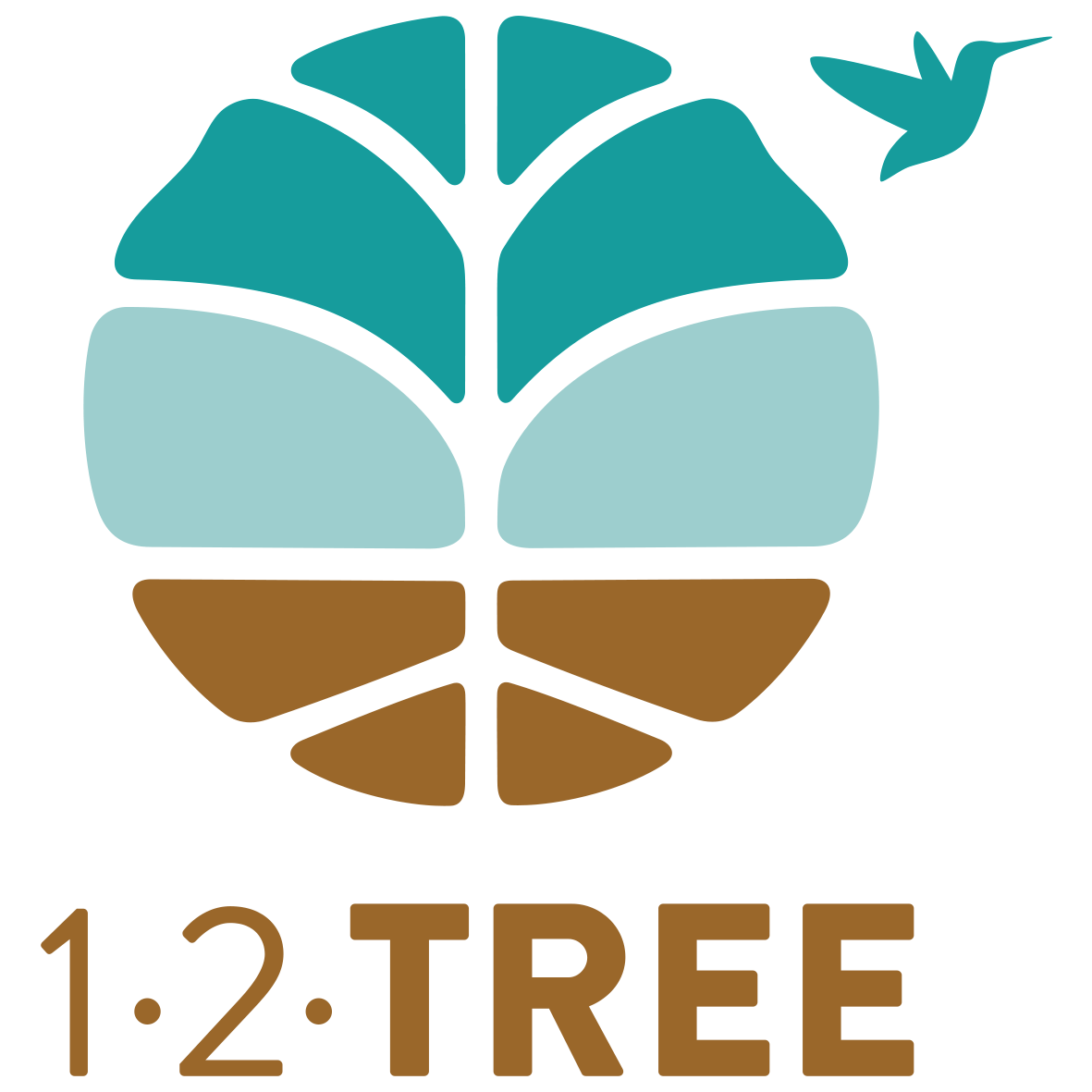Conventional approaches to agriculture continue to act as major contributors to our climate crisis. Unsustainable land use activities and degradative agricultural practices have considerably altered our terrestrial ecosystems and now play a key role in the global climate system. It is estimated that agrifood systems emit a one-third of total anthropogenic greenhouse gas (GHG) emissions.[1]
12Tree is actively working to reverse these trends and to change agriculture from being a culprit of the climate crisis to being part of the solution. As leaders in the field of regenerative agriculture, we have been able to successfully establish climate-resilient, biodiverse, and productive farming systems that use fewer inputs than conventional farms, while actively sequestering carbon from the atmosphere and creating safe and fair employment opportunities. By understanding the emission sources of the past, we are now implementing innovative ways to further decarbonize and reduce emissions within the value chains in which we work.
To that end, in 2022, we continued to embed our Deforestation and Land Use Change Policy (LUCP)[2] into our company’s processes and on-farm operations, beginning with a retroactive assessment of all our existing assets to ensure their compliance with the LUCP. Relatedly, we conducted a GHG inventory baseline study of all our assets with South Pole with the goal of devising a roadmap to lower our overall emissions and to put in place a corporate climate commitment in the near future. Last year, we also began the rigorous process of certifying five of our farms (Andean Cacao, Chimelb, La Paz, Ambrosia, and Cuango) for Verra Certified Carbon Credits[3] that meet the additional CCB Standard.[4]
Pioneering MRV systems needed for land‑based Scope 3 removals
The GHC Protocol establishes the comprehensive global standardized frameworks to measure and manage GHG emissions from private and public sector operations, value chains and mitigation actions. For the first time in its history, the protocol has finally published its land sector and removals guidance, explaining how companies should account for and report GHG emissions and removals from land management, land use change, and biogenic products in GHG inventories, building on the Corporate Standard and Scope 3 Standard. Two critical requirements from this guidance will dictate how emissions and removals will be monitored, tracked, and reported on for the agricultural and food sectors moving forward, those of traceability and the need for primary data. Companies will only be able to account for and report removals within their GHG inventories if they have:
“TRACEABILITY: throughout the full CO2 removals pathway, including to the sink (where CO2 is transferred from the atmosphere to non-atmospheric pools), to the carbon pools where the carbon is stored, and to any intermediate processes if relevant.”
“PRIMARY DATA: empirical data specific to the sinks and pools where carbon is stored in the reporting company’s operations or value chain.”
Through our existing projects and pilot initiatives, 12Tree has already begun designing and implementing such Monitoring Reporting and Verification (MRV) systems with these precise characteristics and requirements in place, while also still actively contributing to the final phase of the GHG guidance. While some concerns regarding permanence still need to be ironed out, 12Tree is poised to become one of the first companies in the world that will be able to offer its clients the necessary MRV systems required for including land-based removals within Scope 3 corporate inventories (“insetting”), in addition to those for more traditional carbon offsets.
Combining this expert knowledge with ongoing monitoring and evaluation of the co-benefit that our regenerative agricultural approach brings to local communities and biodiversity. We believe we can provide a truly unique opportunity for clients that want to invest and to enact Nature Based Solutions in a comprehensive, holistic, and sustainable fashion.
[1] FAO (2022): Greenhouse gas emissions from agri-food systems – Global, regional and country trends, 2000–2020. FAOSTAT Analytical Brief No. 50. Rome. Available online: https://www.fao.org/3/cc2672en/cc2672en.pdf
[2] DEFORESTATION AND LAND USE CHANGE POLICY (LUCP) is 12Tree’s corporate commitment that sets rigorous and clear definitions of what types of vegetation we and our operating partners can and cannot clear. Using established definitions for protected vegetation types, such as HCV or HCS, and by committing to a Gross Zero Deforestation approach, meaning we do not allow deforested land to be compensated with additional forest planting, our commitment will maximize the number of forests we can protect.
[3] THE VERIFIED CARBON STANDARD Program is the world’s most widely used GHG crediting program. It is a mechanism for awarding carbon credits to projects that reduce or avoid GHG emissions. (VCS, 2023)
[4] THE CLIMATE, COMMUNITY AND BIODIVERSITY (CCB) Standard identifies land management projects that deliver net positive benefits for climate change mitigation, for local communities and for biodiversity. (CCB, 2023)
This article is an extract of the 2023 12Tree Sustainability Update Report. Download the report to learn more about our progress and key impact areas.



